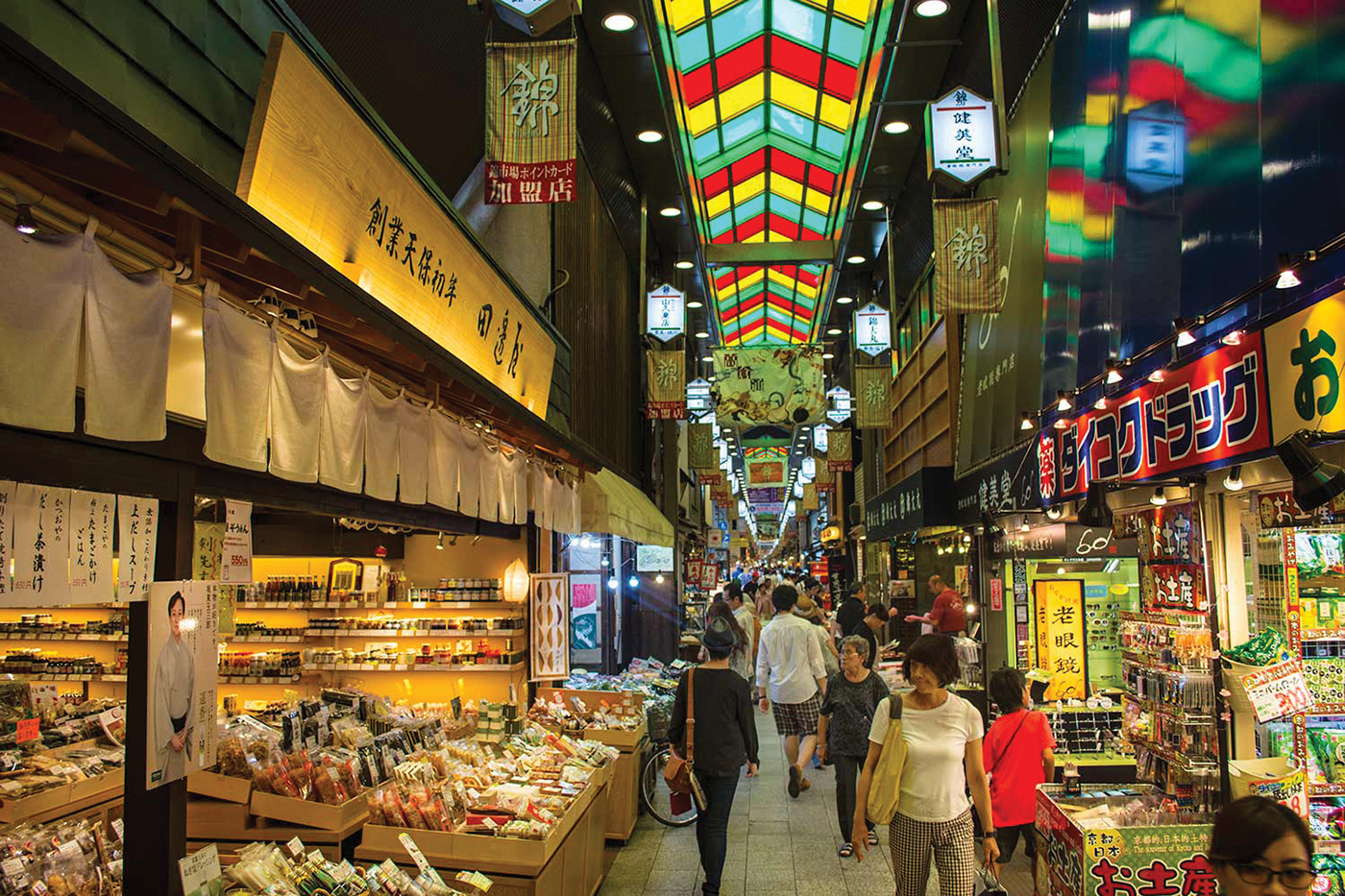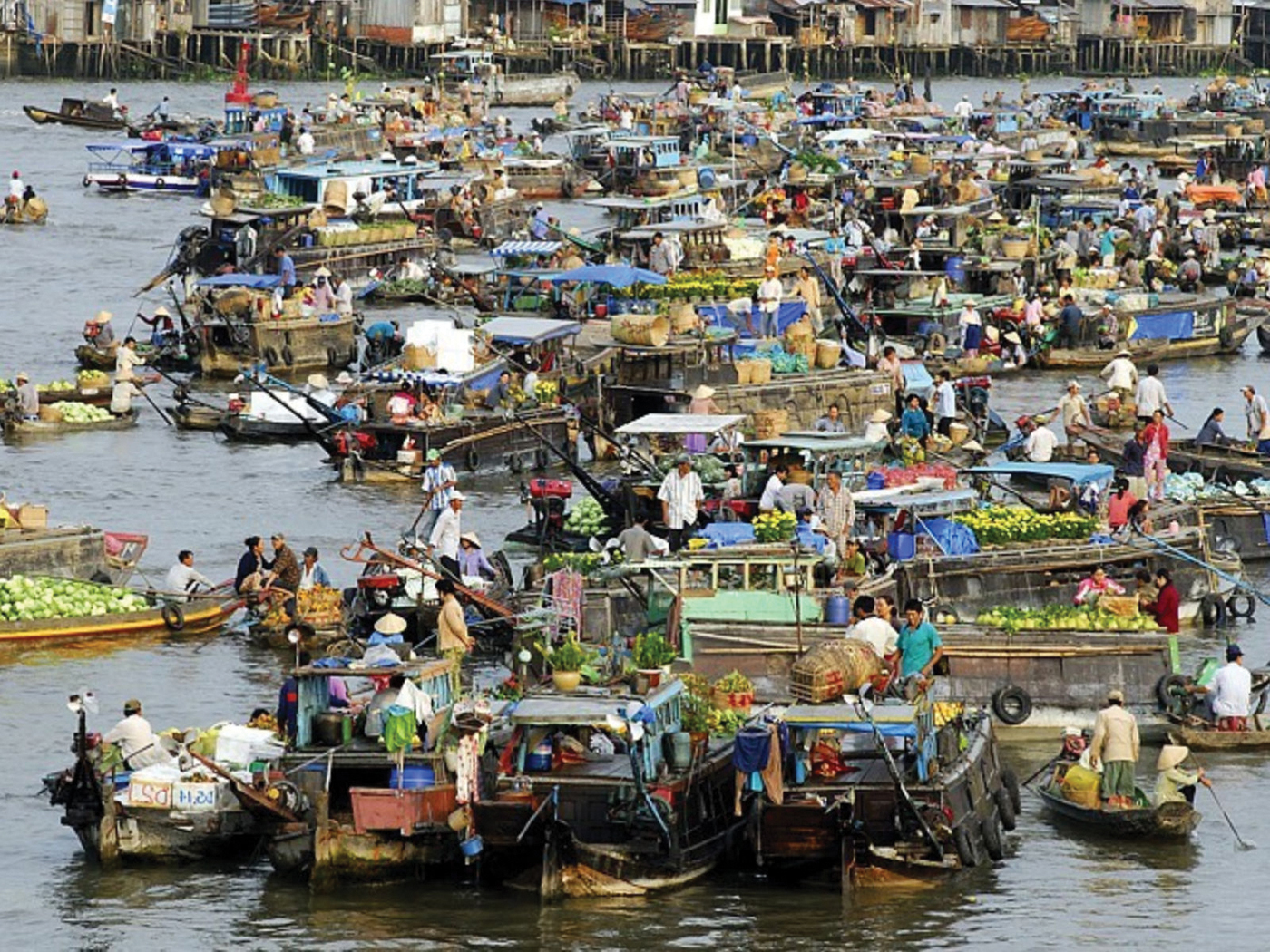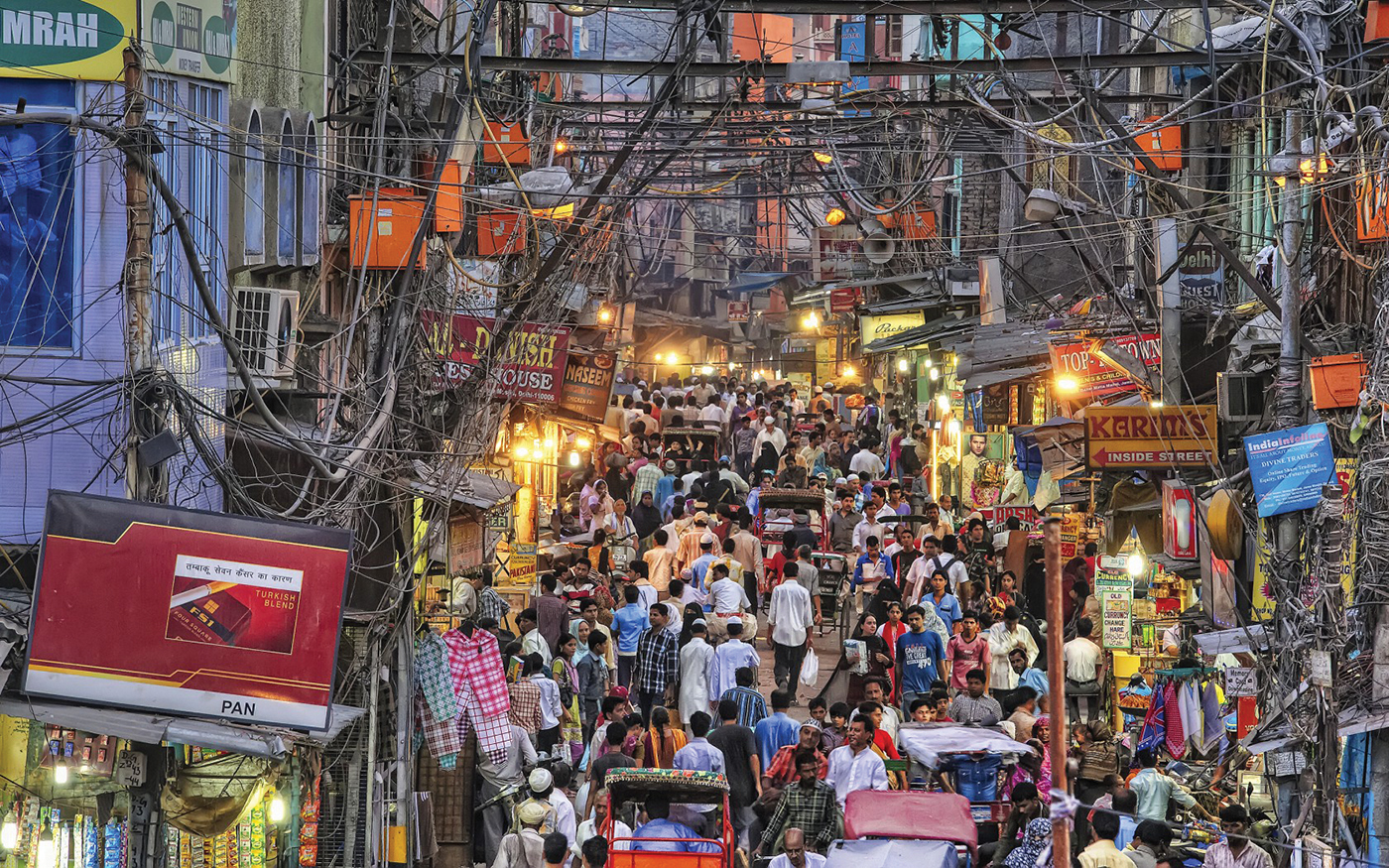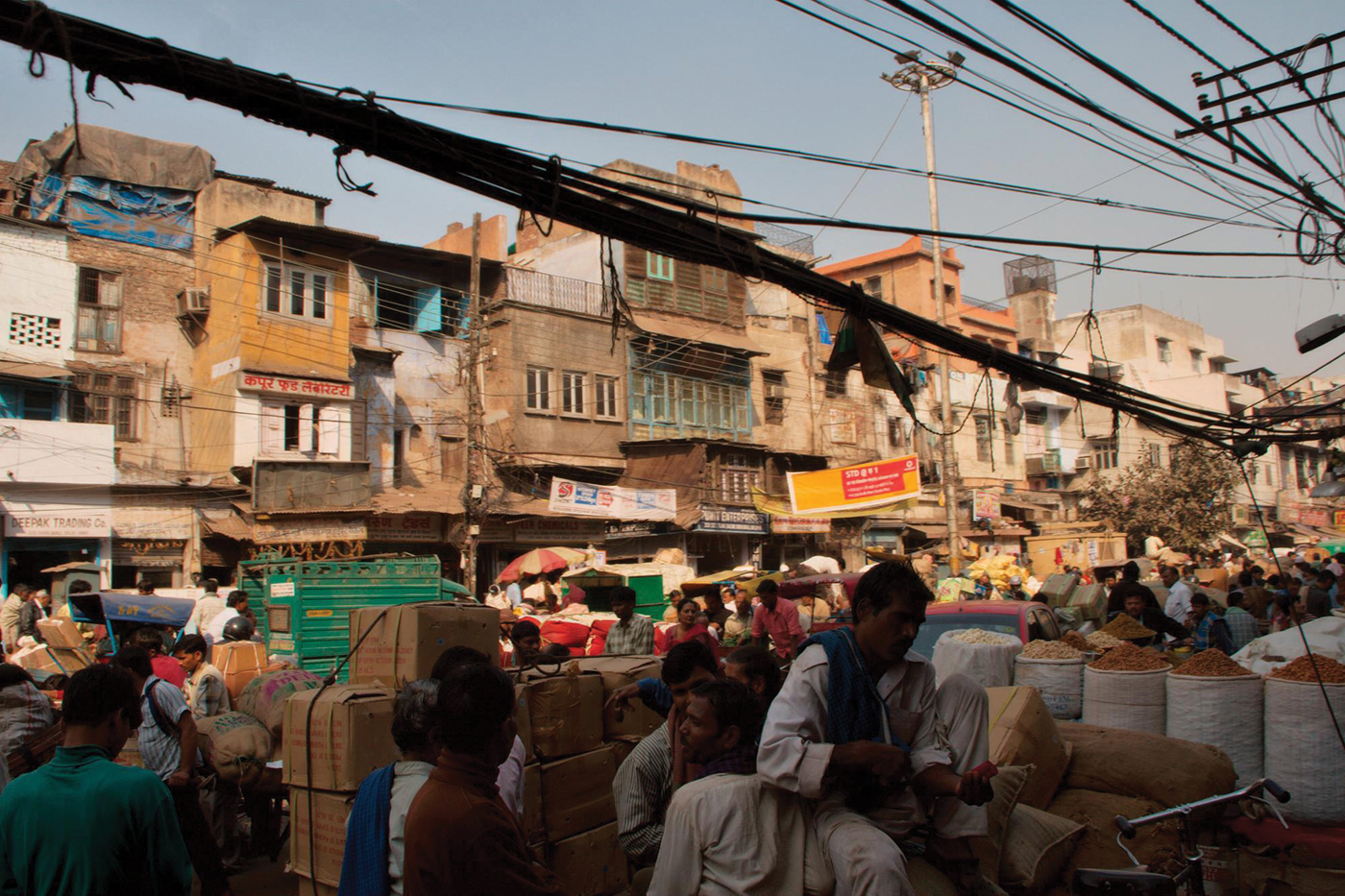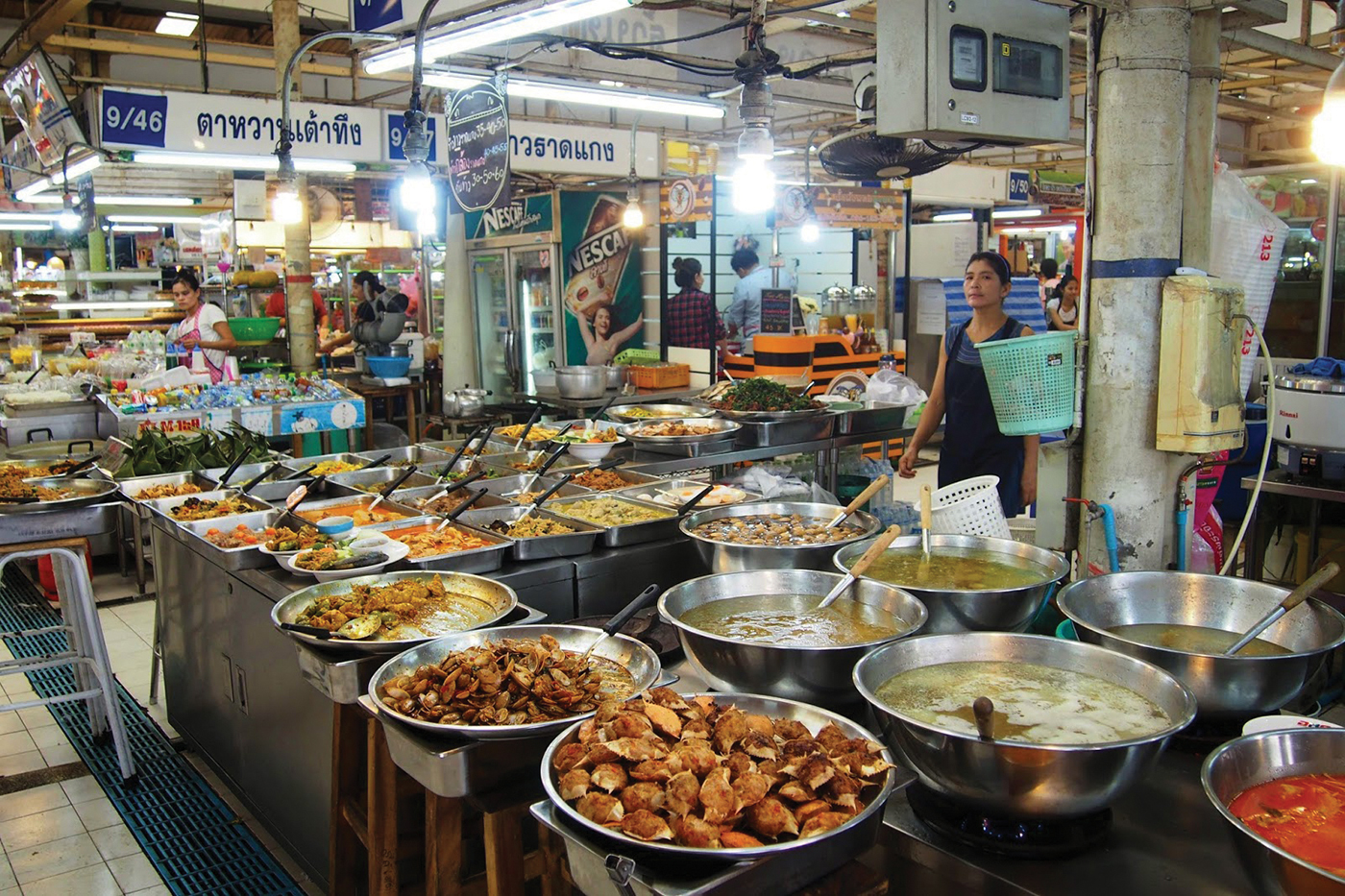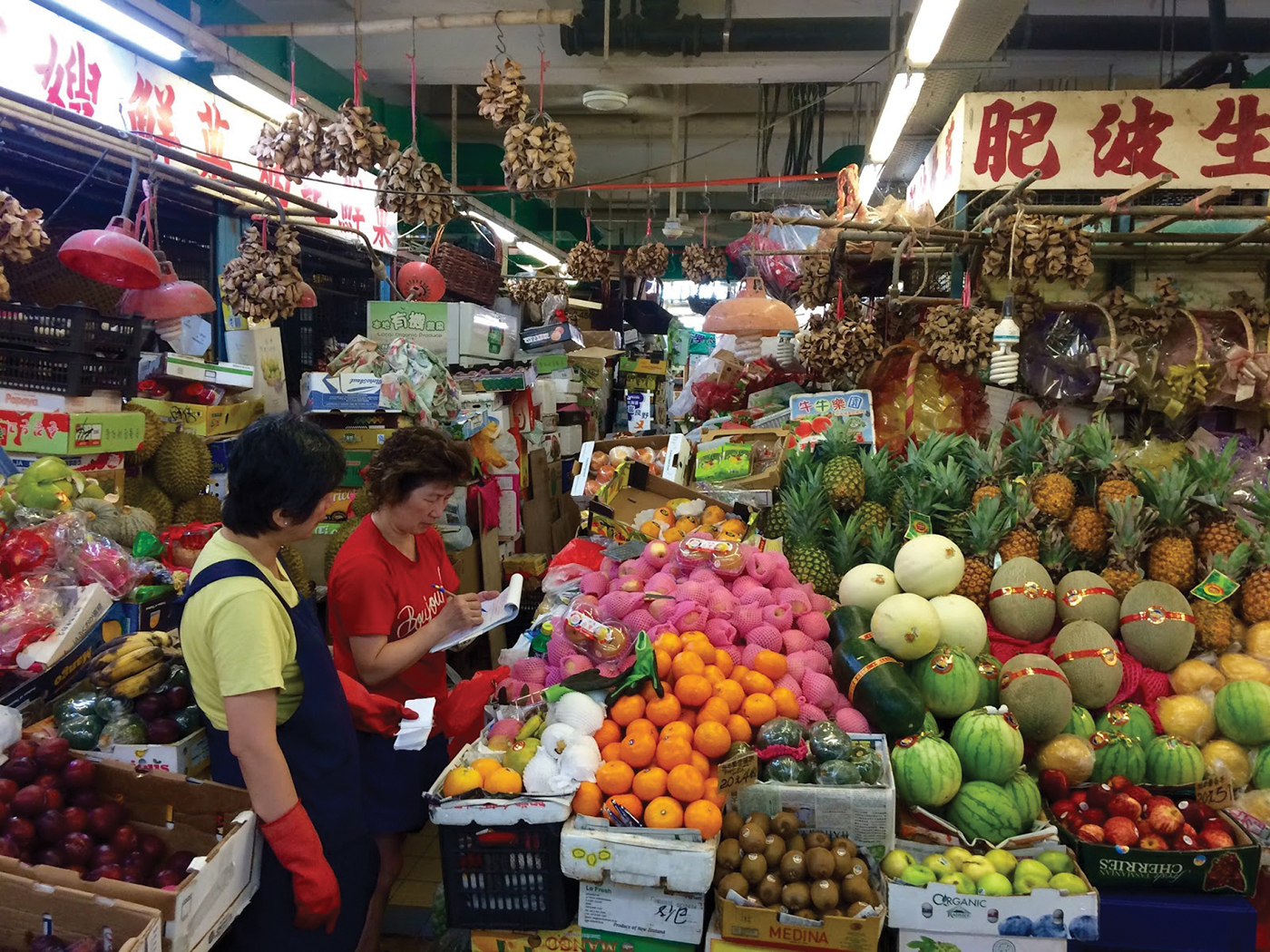There’s no doubt that when it comes to food purchasing, whether eating and drinking or fresh, Asians can teach us a lot! We have some of the most exciting and vibrant food markets almost on our doorstep right throughout Asia. Susanne Pini picks the best of them!
Floating markets, desert markets, street markets, night markets, hidden in the alleyways or sprawling indoors, everywhere you go or look in Asia you can find food markets. Unlike usually well-defined food markets of Europe and North America, Asian food markets come in all shape and sizes, from epic warehouse-sized markets to the smaller traditional village markets where you can buy everything from exotic spices to buffalo skins. Traditionally, most markets also extend their offering well beyond fresh produce to include everything from household goods and electronics to clothes and souvenirs. Below is the selection of 10 quite diverse markets across the continent.
Tsukiji Fish Market, Tokyo, Japan
This dynamic fish and seafood wholesale market is the largest of its kind in the world and one of the best and most popular attractions Tokyo has to offer. One in 10 fish caught in the world is eaten in Japan and a visit here will illustrate just how important they are in Japanese food culture.
Tsukiji handles more than 2,500 tonnes of some 450 varieties of fish and shellfish daily and also supplies fruits, vegetables, and flowers to the Tokyo area. The market opens at 3am once the ships, trucks, and planes make their deliveries from all over the world and by 5am everything is ready for the world-renowned tuna auctions, with people queuing for hours to watch the spectacle.
In addition, some of the city’s freshest, cheapest, and simplest eateries are tucked in both the inner and outer market areas located in a maze of tiny streets, where you can finish your visit with a sashimi breakfast or lunch.
First built in 1935, Tokyo’s beloved market is due to move to a sparkling new facility outside of the city centre in November 2016 thus time is running out to visit the famous original.
- Cai Rang Floating Market, Vietnam
Cai Rang Floating Market, Vietnam
There are markets, and then there are floating markets. Floating markets, where goods are sold from boats, are a trademark attraction among the Southeast Asian countries and they originate from a time when water transport played an important role in daily life.
Cai Rang Floating Market in Vietnam’s Mekong Delta is one of the largest and most impressive wholesale floating markets, stretching half a kilometre down the river. Here, hundreds of brightly coloured traditional boats are laden with a huge array of farming products, like seasonal fruits, vegetables and flowers with sellers advertising their wares from the top of an extended pole attached to their boat.
The market starts at 5am and finishes by midday and, apart from the traditional fare, these days there are also new services like petrol stations, machine repair shops and sewing machine stands. To meet the demands of increasing numbers of customers and tourists, many boats also sell ready-made local food and drinks, handicraft products and even lottery tickets.
Started more than a century ago, the market today is a big tourist drawcard and it has been recognised by The Ministry of Culture as a national intangible cultural heritage site.
Kashgar Market, Kashgar, China
One of the most isolated towns on Earth, bordered on three sides by mountain ranges and on the other by a desert, Kashgar was once a major nexus on the Silk Road and the place where empires came to trade. Though it’s no longer one of the centres of Silk Road trade, it still has one of the largest and best markets in the world, and the only place to shop in an area the size of Western Europe.
Kashgar Market, one of the oldest markets in the world running over 2,000 years, has been welcoming thousands of shoppers every day, with numbers swelling up on Sunday.
The bazaar is lively and offers a huge array of foods and goods with almost nothing packaged up or freighted in or prettified in any way. The food, such as fruits, spices and nuts, is sold in mounds and heaps, or, if you’re lucky, a sack. The meat on offer is in the form of live animals. Clothing is basic and functional, except an outstanding choice of headgear.
Few westerners ever visit Kashgar and its very remoteness is what makes the market so extraordinary. In a world where most markets often seem to be selling the same stuff, Kashgar is truly unique.
Shilin Night Market, Taipei
Night markets are quintessential to understanding and enjoying Asia. Located on a quay on the Keelung River, The Shilin Night Market is Taipei’s biggest and most famous night market packed with locals and tourists. Opening after sunset until 2am, it offers a seemingly endless array of 500+ food stalls and open-air restaurants, many of them known for unique Taiwanese dishes exclusive to the market.
Beside fantastic food choices, the market offers almost everything else you might need, such as clothes, shoes, housewares, paintings, toys, antiques, acupuncture and massages, and there are even movie screenings in the courtyard of a temple right in the marketplace.
In operation for more than 100 years, the market has gone through many locations and transformations, from being just a long, windy street full of vendors to a large open-aired covered area with a grid design, completely rebuilt in 2011. Surrounded by cinemas, arcades and karaoke bars, the Shilin Night Market has a lot to offer and today it has become synonymous to nightlife among both residents of and visitors to Taipei.
- Nishiki market, Kyoto, Japan
Nishiki Market, Kyoto, Japan
Known as ‘Kyoto’s Kitchen’, Nishiki Market sells all things food related, from fresh seafood and produce to knives and cookware. Started as a wholesale fish district, Nishiki Market has a long, rich history dating back to 1310 and many stores have been operated by the same families for generations.
The five-block-long covered shopping street is lined with more than 100 shops and restaurants, some no bigger than a kitchen. Most of the shops specialise in one particular kind of food and they often have small sit-down restaurant or a food stand offering the same.
Nishiki Market is still Kyoto’s largest traditional food market and while modern food and souvenir shops are starting to move in, there are still enough traditional shops to give you a glimpse of what a traditional shotengai (shopping street) must have looked like.
- Chandni Chowk, Delhi, India
- Chandni Chowk, Delhi, India
Chandni Chowk, Delhi, India
One of the oldest and busiest markets in India, the Chandni Chowk traces its roots to the 17th century and the reign of the legendary Mughal Emperor Shah Jahan. Originally designed by the emperor’s daughter, the market was arranged in a square and was divided by canals with a central reflecting pool that lent the market its name, translated in English as Moonlight Square. Although much has changed since the days when it would host grand Mughal processions, the street has always hosted a market alongside and integrated with its surroundings.
Chandni Chowk sells pretty much everything, from made-to-order wedding dresses to exotic fruits and spices to books and musical instruments. If you can think of it, it’s probably on sale somewhere along this street. There is no obvious boundary where the market ends and the rest of the city begins as the side streets host sort of smaller sub-markets specialising in various items.
Chandni Chowk is famously crowded and chaotic. Visitors looking for a respite from the crowds can drift out to the edges of the street to the refuge of cafés and restaurants set in colonial-style buildings surrounding the market area. The market has also recently become a popular set for Bollywood films, some set in the modern era and others taking advantage of its historic architecture for period pieces.
- Or Tor Kor Market, Bangkok, Thailand
Or Tor Kor Market, Bangkok, Thailand
Ranked as one of the world’s 10 best fresh markets by a CNN travel guide, Or Tor Kor is much more than a local market.
Located next to Bangkok’s busy Chatuchak weekend market, Or Tor Kor Market is as packed with perfect produce as its neighbour is with souvenirs and knick-knacks.
Starting off as an agricultural collective in 1974, Or Tor Kor Market has grown over the years into an upscale outdoor food market, considered to be ‘Bangkok’s gourmet market’. While there are bigger food markets in Bangkok, none can match the overall quality found at the well-organised and tidy array of vendors collected under one roof. Mostly known for fresh, large-sized fruit of all types and varieties and hard-to-find goods, you will also find a wide range of vegetables, seafood, custom-cut meats and flowers, as well as organic produce.
The vast majority of vendors’ goods are takeaway only, but there is also a small food court and a few informal restaurants specialising in Thai cuisine, although at a slightly higher price than most other places.
- Kowloon City Wet Market, Hong Kong
Kowloon City Wet Market, Hong Kong
In a metropolis known for the quality and quantity of its markets, Hong Kong’s Kowloon City Wet Market stands out. It is housed within a three-storey building whose porthole windows give its exterior the appearance of a deconstructed cruise ship that somehow found its way into the middle of the fast-gentrifying district.
The first two floors are dedicated to a massive fresh food market, also known as a ‘wet market’ as the sales of fresh meat and fish require frequent floor washing, while the third is home to food stalls and tiny cafés selling everything from steamed hairy crabs to red-bean coffee.
With almost 600 stalls, Kowloon City is one of Hong Kong’s largest markets and the must-see foodie destinations for both tourists and locals who often refer to it as The Food City or Little Thailand, due to its large Thai population.
Tiong Bahru, Singapore
In the city where eating ranks as the national pastime and food is available on every corner, Tiong Bahru Market stands out for its excellent hawker centre as well as the freshest produce on offer, even attracting celebrity chefs, including Anthony Bourdain who featured it on his show.
Located in one of Singapore’s trendiest neighbourhoods, Tiong Bahru Market and Food Centre is the first self-organised wet market in the city. Started in 1950 as a simple wooden structure with zinc-pitched roofs, it has been completely rebuilt in 2006 as a two-storey wet market and a food centre. With smooth curved corners, flat rooftop and a large central garden courtyard, the architecture of this modern triangular-shaped building is inspired by the surrounding Art Deco-style buildings and its design pays homage to the distinctive architecture and heritage of the area.
Central Market, Phnom Penh, Cambodia
A tourist attraction in its own right, the much-photographed Psar Thmei, or Central Market in Phnom Penh, was designed by the French in 1937 and hailed at the time as Asia’s largest covered market. The original Art Deco design, highlighted by the huge central dome with four arms branching out into vast hallways, has made it a central, if unlikely, landmark.
Reopened in 2011 after extensive renovations, its atmospheric central hall is laid out with stalls selling everything from fresh fruits and vegetables to jewellery, electronics and souvenirs. There are also numerous food stalls and restaurants, especially on the western side of the market facing the main boulevard. Apart from goods offered, the building design allows for maximum ventilation, and even on a sweltering day the central hall is cool and airy which makes it the most popular shopping destination for tourists and locals alike.


